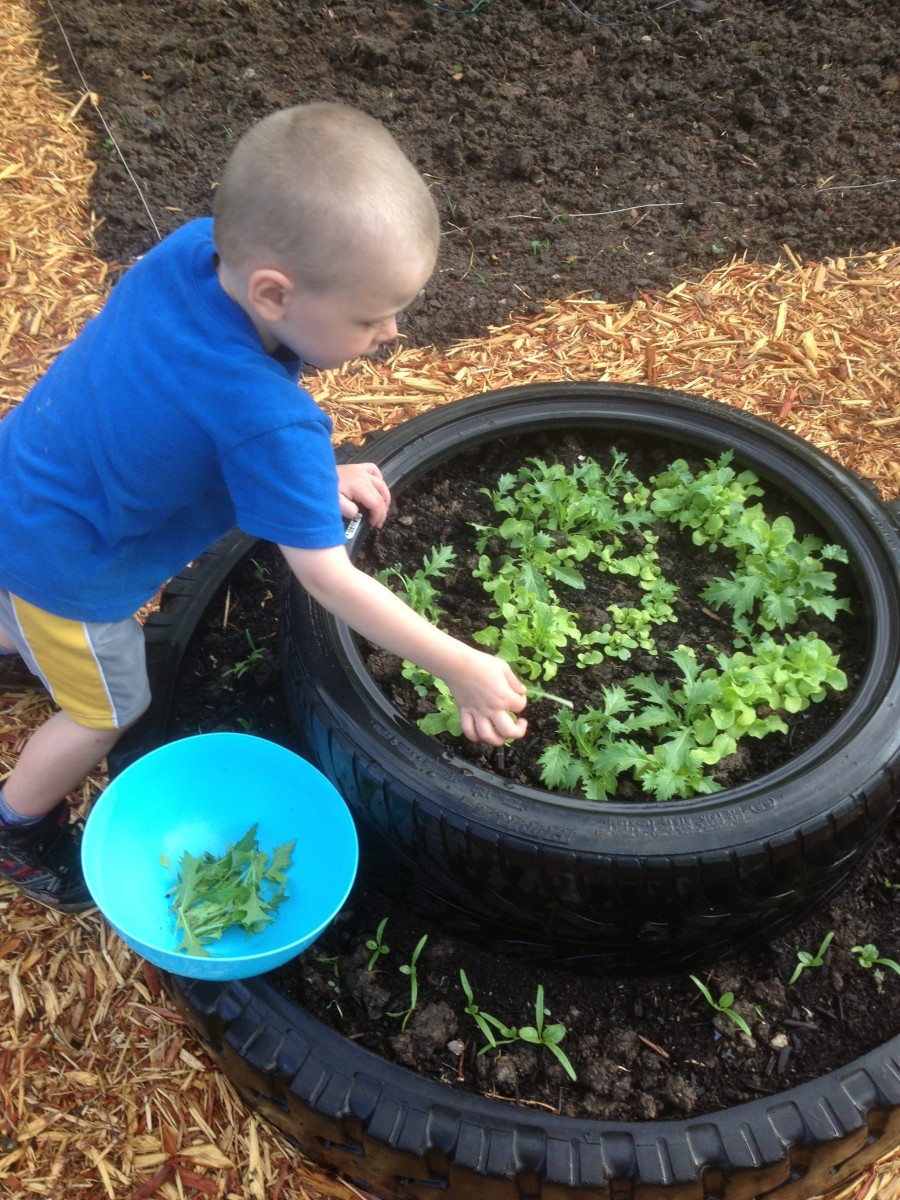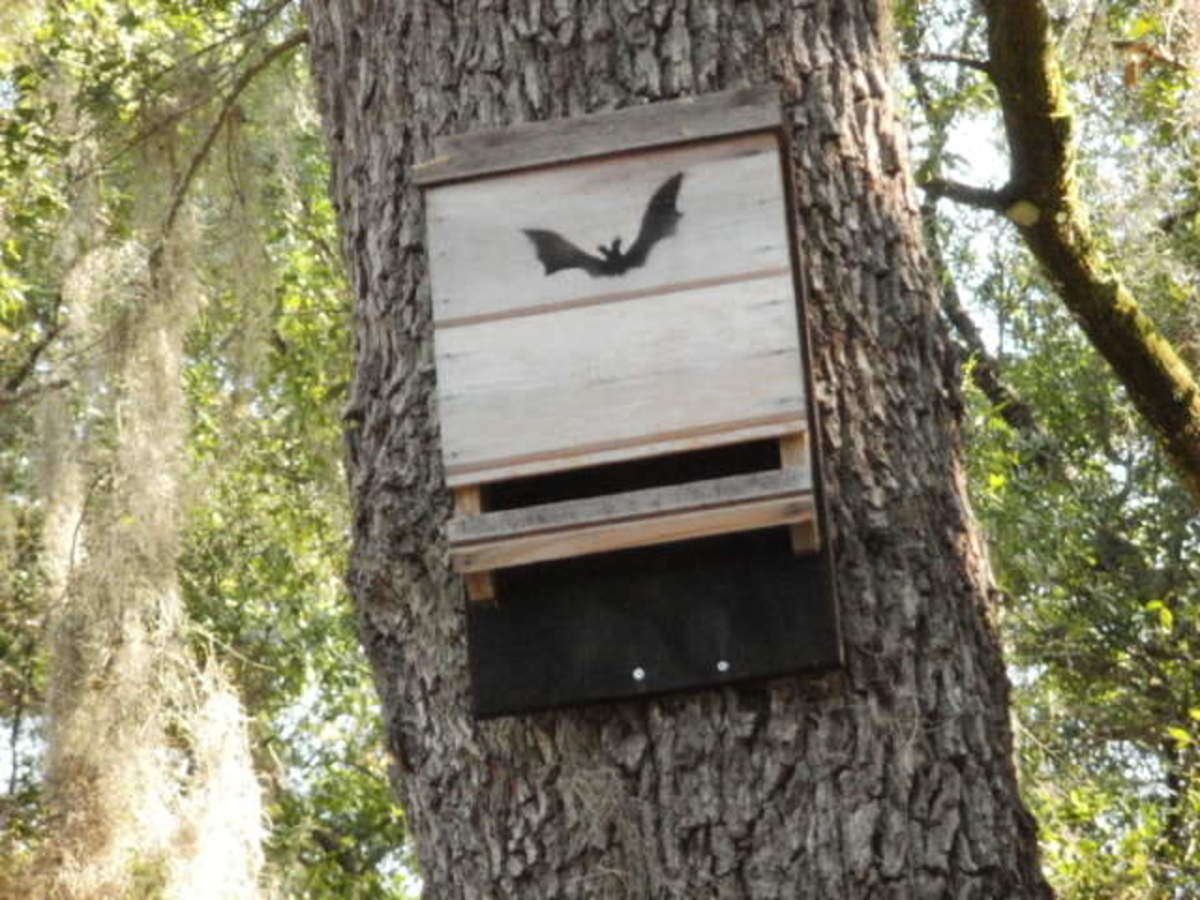Homesteading Life
Raising and Milking Goats
I love goats.
A while back there was a contest to raise money for a local charity where people had to vote on who would have to kiss a goat. When I saw it I thought, "Heck, I'd do it for free." But that is me, not everyone loves goats like I do I suppose.
One of the first things after, chickens (which I will talk about here in a bit), that I knew I wanted when I started my homesteading adventure was, goats.
My first two goats were Fadra and Marsha (the good goat). Fadra was a Nubian goat which is known for producing rich high quality milk and Marsha was a Saneen, they make lots of milk.
I brought them home, knowing almost nothing about keeping goats and then realized that I would need a Billy goat if I was going to be getting any milk from the girls. Like all mammals, babies are the source of milk production in goats.
We brought Joe home, he was a Boer, or meat goat, so he was pretty big as goats go, but had a nice temperament, which I would later learn was a bit odd for an intact billy.
Joe ended up dying on Christmas day in 2009, but not before performing the required task. Kind of sad that he died, as I have later learned, Pepto Bismal would have saved him! In fact any time goats or cows have loose bowels a shot of Pepto Bismal will usually help them firm up better than almost anything else I know of.
The First Baby Goats
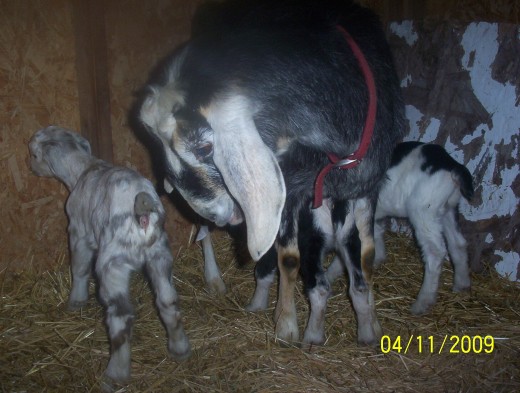
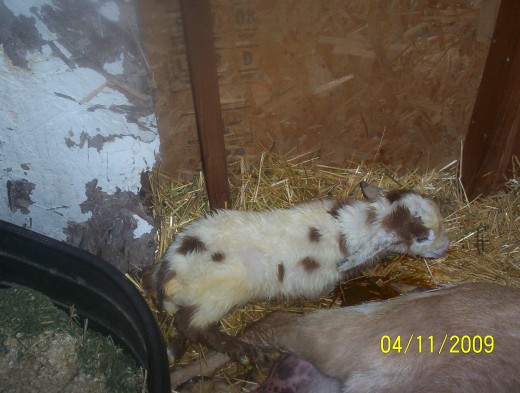
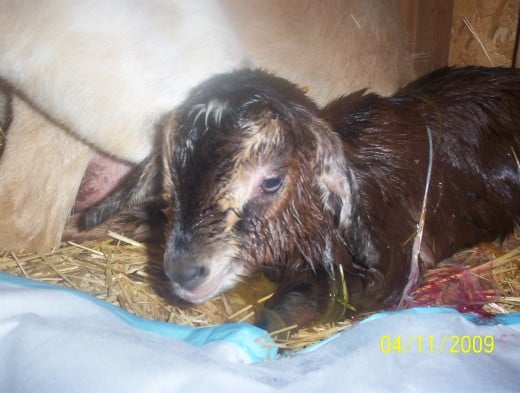
Baby Goats Are Needed For Goats Milk
These are the babies that Marsha and Fadra had. The first year. Fadra actually had 4 babies born the first go around. I kept waiting and waiting for these babies to be born. What I did not realize then was that Fadra has lots of babies each year and always had problems delivering them. We did not know each other all that well back then, however over the years I got to know when and how to help her.
Sometimes it is necessary to turn baby goats around to make sure they are coming out the correct way which is either front feet first with the nose right on top of those feet or hind feet first. The are times when the head can get turned backwards then you need to push the baby back, feel for its head and then either let the mom push it out or pull it gently out by the feet.
Marsha usually had 2 or 3 babies each year and almost never had any trouble! Goats can be impregnated by more than one billy. They go into heat once or twice a year, depending on if they have babies or not. If they have babies each year then it is usually once in the fall.
You can tell if they are likely in heat because the males will be going crazy, they curl their upper lip back (we call it the "elvis look" - for the longest time I didn't understand what was going on) the females will pee a lot and the males will be investigating that urine for pheromones that tell them they are ready. The males will also start spraying their urine so they can smell their absolute best (not) for the females.
If you have more than one male in with a group of females the males will fight with each other. Usually no one get hurt especially if either everyone has horns or no one has horns. Mostly they will start to annoy the females as they will chase the girls around trying to mate.
My solution to that problem was to keep the billies from the spring babies that I was going to breed back (usually only one or two) and then sell them off in the late fall once they did the job I needed them to do.
I did keep Jose and Buckley for several years (they are the little males Marsha had the first year). Let me tell you, keeping intact males, once they get older is hard work. Those two could jump a five foot fence, though they were de-horned and de-scented (if you burn between the horns you can cut down on the bad goat smell - except for the urine spraying during rutting), and they were ornery.
How To Milk A Goat
Milking Goats
Have you ever milked a goat?
Dehorning Options For Goats
Should you decide that you absolutely must dehorn your goats, though I have found over the years it really isn't necessary, here are your options.
You can take your baby goats to the vet. The horns need to be burned off when the females are about 3 days old and for males about 2 days old. Just as the little stumps start to appear it as it is best to get them burned quickly. This is an expensive proposition in my experience. The vet will give them a shot which makes them bleed for some reason, then will hold the baby as they burn the horn buds and the scent gland of the males which is between the horns. The most painful part of this process for you will be the bill at the end.
Farmers around here just do it themselves, which is a much more economical if not humane way of de horning. First you need a de horning iron, which you can get from Amazon, or your local farm store. Or you can find a steel piece of metal with a wooden handle. You need to get the burner red hot.
When I have done this chore, I usually have a second person to help. The holder person lays the baby down on the grass straddling the baby goat, with their hands on either side of the baby they hold the ears back and the head steady using their body to immobilize the baby goat that has been wrapped up in a towel so as to keep it from wiggling and getting hurt. (well hurt worse that they will already be hurting).
Once the baby is secured apply the hot iron to the horn buds. It will smell like burning flesh which is not pleasant. Once the horns are all the way burned off and any remaining horn fragments are burned then put a crumpled up comfrey leave on the wound. This will help with the pain and healing. After about five more minutes, of holding the baby with the leaves on its head you can let it go back to its mom.
Another solution, which is less traumatic but more time intensive is to use caustic paste to de horn your goats with. This involves shaving down the horn area, wrap your baby goat in a towel, put the paste on the horns and all around the base. Let this sit on there for at least 45 minutes. Then very carefully wipe the paste off with cotton balls soaked in vinegar (vinegar is the neutralizer of a basic ph product which is what the caustic paste is made of) Be very care not to get this paste in the baby's eyes. After you have all of the paste off, rinse the area with cool water.
With a little luck, and quite a bit of practice you should have de horned goats. I have seen older goats de horned with clippers which is a gross and cruel way to de horn older goats. In my opinion, goat horns are a natural part of the goat, they curve back for the most part and really aren't that big of a deal, except that they might get stuck in the fence or feeder. You shouldn't be using those kind of feeders any way in my opinion. It is best to put the hay in an open feeder and get over the fact that a lot of it will go to waste, that is simply part of having goats.
Lots of Goats
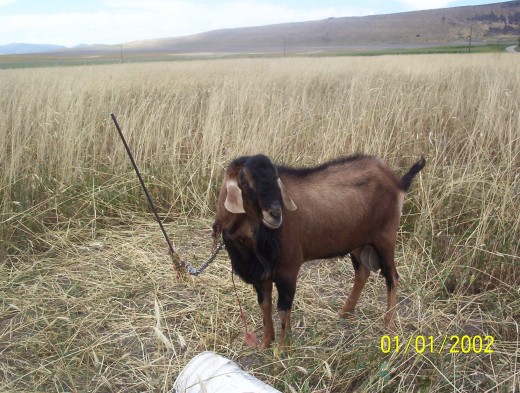
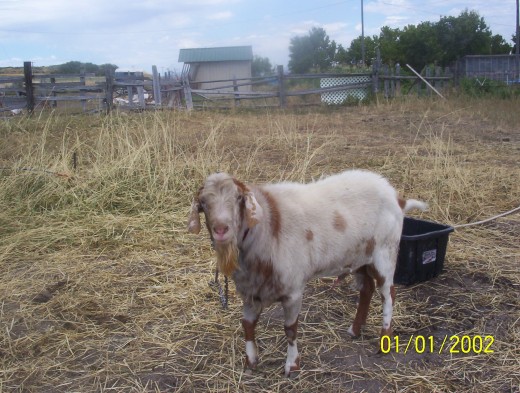
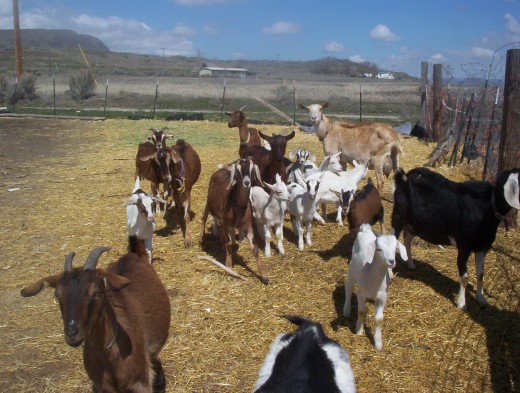
Things You Need To Know About Keeping Goats
These are some things you need to know about keeping goats:
- They are herd animals and don't do well alone
- They need at least a three sided roofed shelter, they don't like wind, rain or snow
- They don't have top teeth and you can tell how old they are by how many bottom teeth they have
- They need about their weight in quality hay (or hay and grain) each month. A little more for pregnant does.
- Grain can give them scours (loose bowels) Pepto Bismal will help with that
- If you feed your lactating does weeds the milk will taste bad, really bad.
- You can freeze goat's milk - best done in glass - don't fill the mason jar all the way up or it will crack.
- Goat's milk will last about 2 days in the fridge before starting to turn
- You can make soap, yogurt, cheese and way good bread from goat's milk
- You can get recipes for all of these over at Hartnana.com
- You don't have to de-horn your goats, the horns make really nice handles, goats do not like it when people mess with their horns
- They need to have their hooves trimmed at least once or twice a year. This is best done in the milking stand while they are busy eating grain.
Cows and Larry the Llama
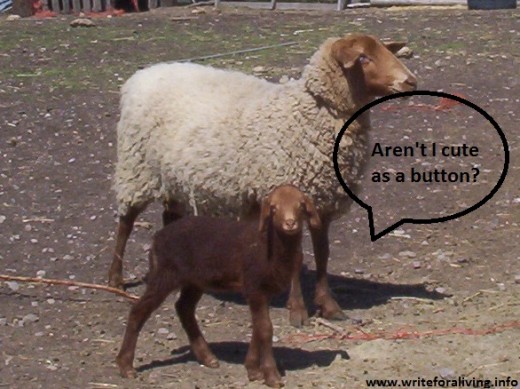
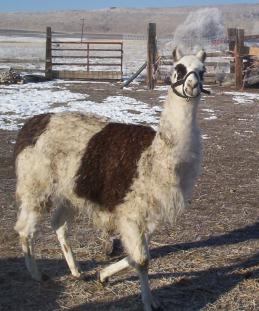
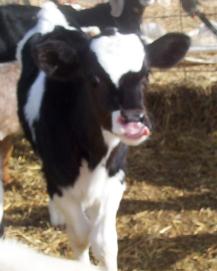
Random Llama Facts
- They are like camels
- They have claws more than hooves
- They have eye teeth that are VERY sharp
- They wrestle with each other
- They can be trained
- They are very strong
Other Barnyard Critters
We gave it go raising our own beef cow, as you can see we named him. The thing about steers (castrated cows) is that they are very cute when they are little like this, however, as they get older and bigger, they become exponentially more scary and dangerous. They also eat a lot of hay, with hay as expensive as it is we decided it just isn't worth the effort when we can buy beef from friends who have the space to raise them for a fraction of the cost.
We get the benefit of knowing where our beef comes from, and how it is raised without having to worry about containment and feed.
Larry the Llama was another project! We got him for free from a friend. I learned a lot about llamas while Larry lived with us. He was a skiddish critter who was not fixed and therefore relatively dangerous. They have claw like hooves and eye teeth, as well as their claim to fame, spitting. Larry lives on a sheep farm in Wyoming these days. He is happy being a guard Llama.
Then there are sheep. You know when the Bible calls us all sheep, it is not a compliment? Sheep are not very smart animals, though they are very cute. We liked Carl a lot. He ended up having to be feed by one of my goats because his mom, Shirley wouldn't nurse him. While it is possible to bottle feed babies that are rejected by their mom's I find it much easier to simply hold a goat for a bit while the baby figures it out, then to milk the goat then feed the baby.
Keeping Chickens
When I first started keeping chickens I did a bunch of research on how much space they needed and clipping their wings and what type of food they should have. I have since learned so much.
- Chickens can fly - mine roost in the rafters of the chicken coop.
- Chickens will lay eggs anywhere, but they prefer a private "safe" place that can be achieved by leaning a piece of cardboard or even a board against the wall so that it is "private".
- You don't need a rooster to get eggs
- If you have a rooster, the long eggs are males and the round one (like you get in the store) are female - this is important if you are thinking about hatching eggs in an incubator
- If you decide to clip your chickens wing feathers, you will need to do this a couple times a year because they will grow out. (And your neighbors will laugh at you while you run around trying to catch your chickens)
- Chickens make everything dirty, almost as bad as ducks, but not quite.
- You can fill up a plastic bucket with water, you don't have to buy the special water container
- If you put a real light bulb in your coop in the winter you can expect to still get eggs, though not as many as in the spring.
- When raising your baby chicks, put little marbles or rocks in the bottom of the water feeder so they don't drown.
Chickens, Ducks n Geese

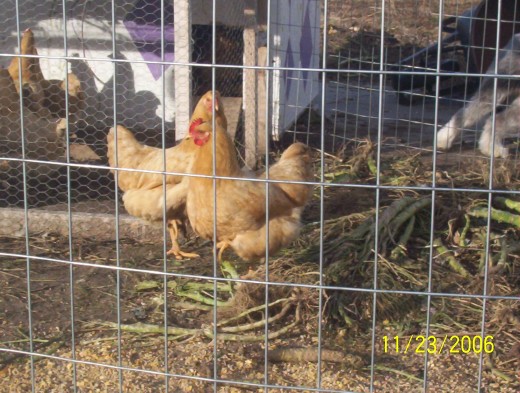
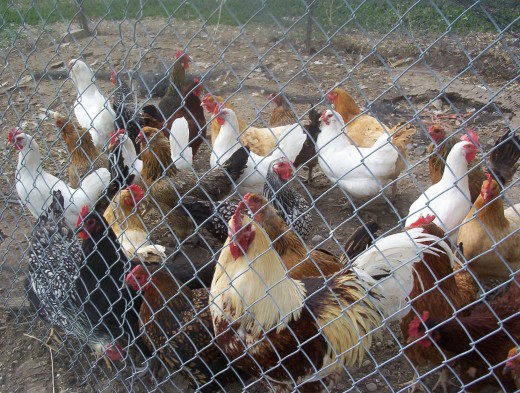
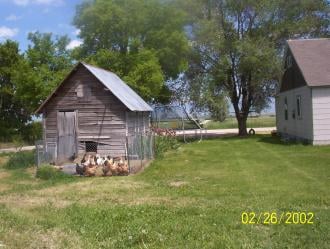
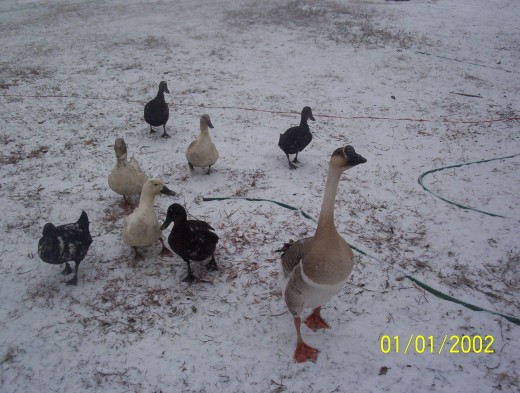
Homesteading Life For You?
Over the years and many animals we have raised and kept, we have come to love living this lifestyle.
I remember years ago, when I was first researching the idea of living in the country I got Carla Emery's book The Encyclopedia of Country Living. In the back of that book is a quiz. When I first started out I didn't know any of the answers...today, I know all of the answers and many more.
If you are starting out on your homesteading journey, and have questions, especially when it comes to goats and birthing goats, please feel free to contact me either here or over on Facebook (I spend a lot of time over there).

